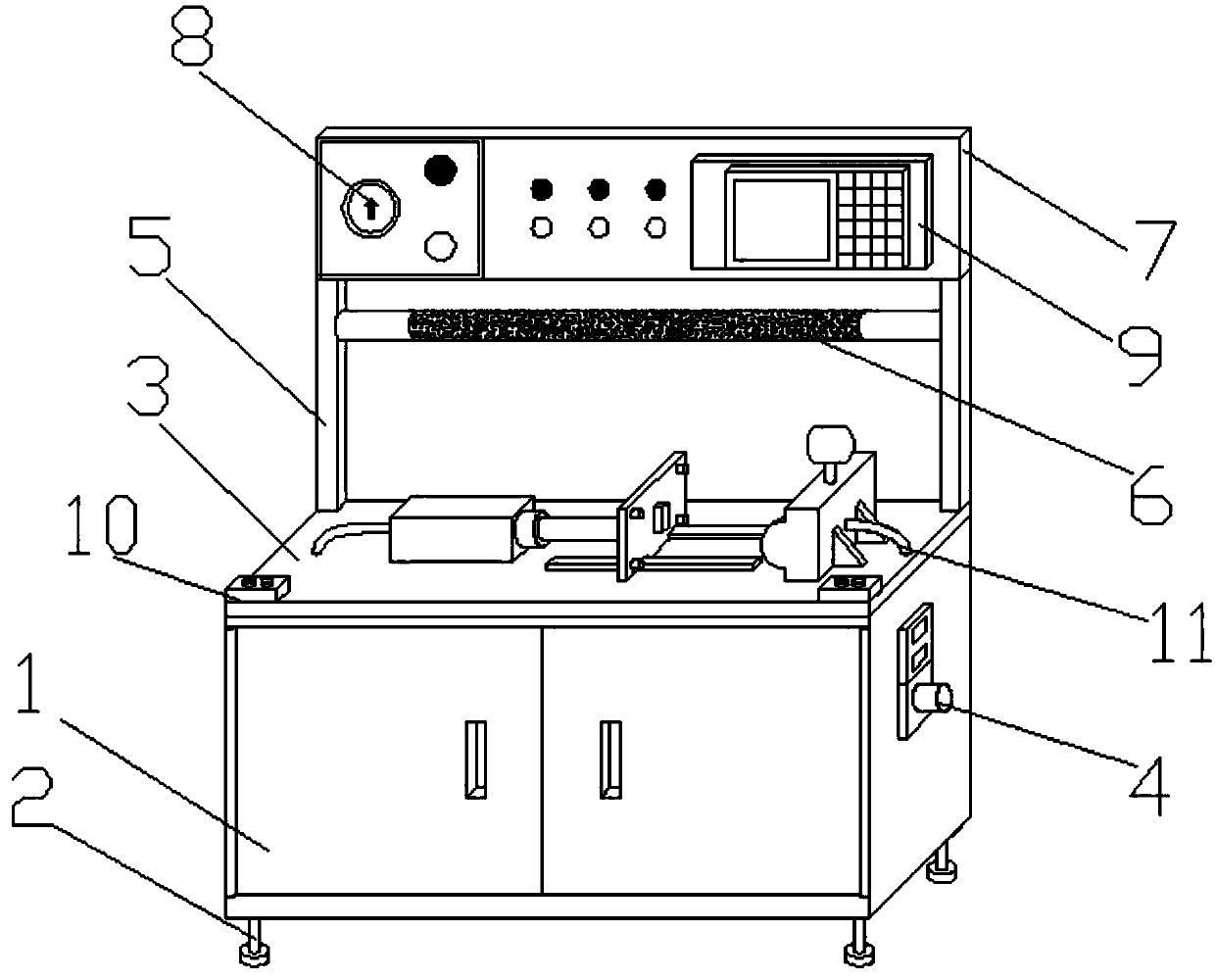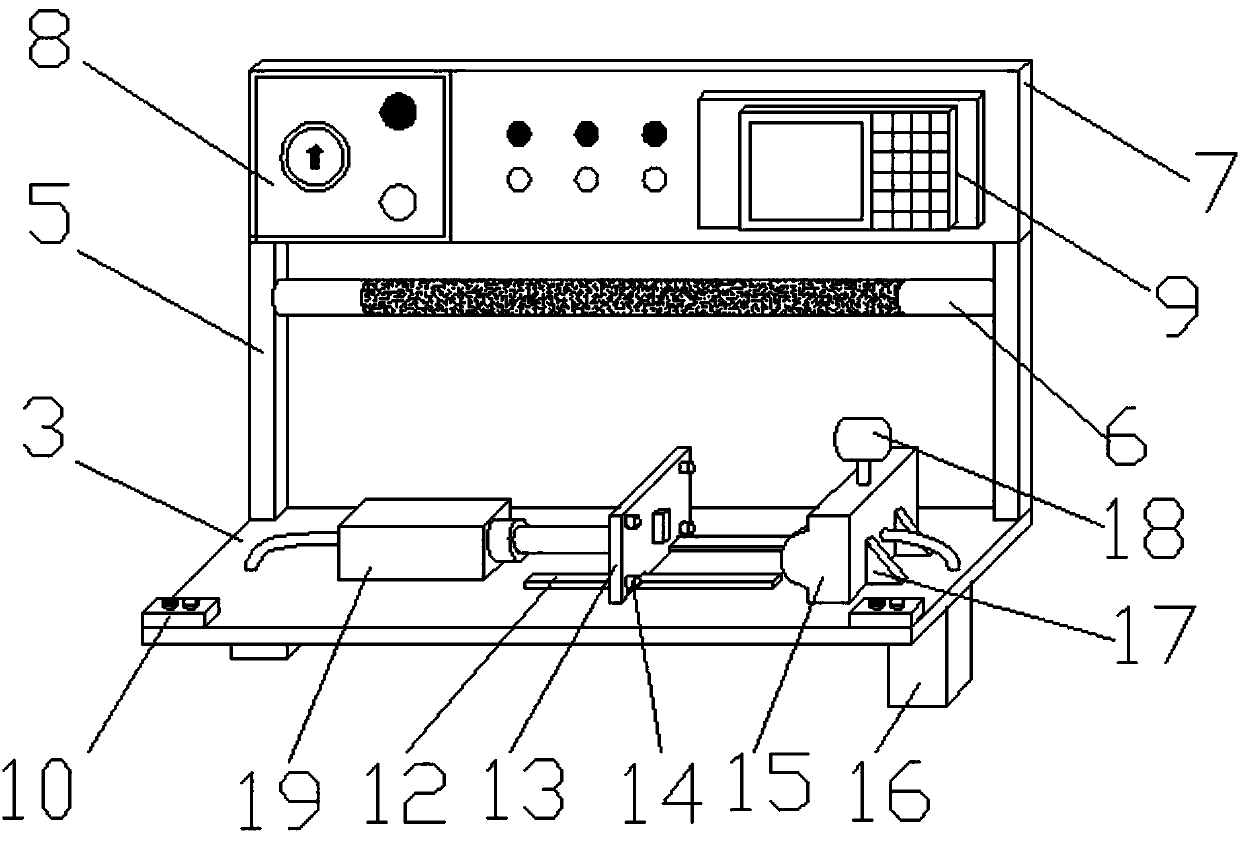Crank case air impermeability testing table and operating method thereof
A test bench and crankcase technology, which is used in fluid tightness testing, fluid tightness measurement using liquid/vacuum, and machine/structural component testing. and other problems to avoid damage to the workpiece, improve detection accuracy, and ensure human safety.
- Summary
- Abstract
- Description
- Claims
- Application Information
AI Technical Summary
Problems solved by technology
Method used
Image
Examples
Embodiment Construction
[0025] The following will clearly and completely describe the technical solutions in the embodiments of the present invention with reference to the accompanying drawings in the embodiments of the present invention. Obviously, the described embodiments are only some, not all, embodiments of the present invention. Based on the embodiments of the present invention, all other embodiments obtained by persons of ordinary skill in the art without making creative efforts belong to the protection scope of the present invention.
[0026] see Figure 1-2 , a test bench for crankcase air tightness, comprising a test box 1, support feet 2, test bench 3, external board 4, bracket 5, lighting lamp 6, mounting board 7, pressure gauge 8, control board 9, Start button 10, air pipe 11, slide rail 12, pressure plate 13, positioning block 14, fixing fixture 15, electromagnetic gas valve 16, support plate 17, pressure transmitter 18 and cylinder 19; the bottom of the test box 1 is provided with a s...
PUM
 Login to View More
Login to View More Abstract
Description
Claims
Application Information
 Login to View More
Login to View More - R&D
- Intellectual Property
- Life Sciences
- Materials
- Tech Scout
- Unparalleled Data Quality
- Higher Quality Content
- 60% Fewer Hallucinations
Browse by: Latest US Patents, China's latest patents, Technical Efficacy Thesaurus, Application Domain, Technology Topic, Popular Technical Reports.
© 2025 PatSnap. All rights reserved.Legal|Privacy policy|Modern Slavery Act Transparency Statement|Sitemap|About US| Contact US: help@patsnap.com


